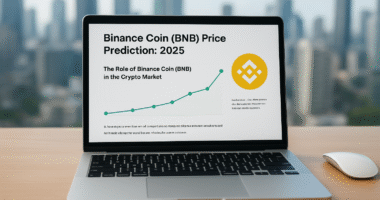Ethereum Transaction Fees Drop After Recent Network Upgrade
Ethereum transaction fees have decreased following a recent network upgrade, and many users are noticing faster and cheaper transfers. The update aims to make Ethereum more efficient, especially during times of high activity, when fees usually rise sharply. These improvements are important because Ethereum remains one of the most widely used networks for decentralized finance (DeFi), NFTs, blockchain games, and smart contracts.
Lower fees can encourage more developers, traders, and companies to build on Ethereum. If these improvements continue, the network may become more competitive compared to other blockchain platforms.
What Caused the Fee Reduction?
The decrease in fees comes from a network upgrade designed to improve how transactions are processed. In simple terms, the upgrade allows blocks to be used more efficiently, meaning more transaction data can fit into each block. When more transactions fit into blocks, users do not need to fight for space as much, which causes fees to drop.
How Ethereum Fees Work
Ethereum fees are based on:
- Network activity
- How busy the blockchain is
- Gas fees set by users and validators
When many users try to send transactions at the same time, gas fees increase. When fewer users transact, gas fees decline. This upgrade makes Ethereum better at handling high activity, so spikes in fees may be less frequent.
Why the Upgrade Matters for Users and Developers
The Ethereum ecosystem is large and includes:
- DeFi platforms such as lending, staking, and trading apps
- NFT marketplaces
- Payment systems and crypto wallets
- Smart contract-based financial tools
High fees in the past made it difficult for new users to join these platforms. Many users moved to cheaper networks such as:
- Solana
- Polygon
- Avalanche
- Base
Now that Ethereum fees have dropped, some users may return to the main network. Developers especially benefit because lower fees allow them to test and deploy new apps more affordably.
Impact on DeFi and NFT Activity
DeFi Activity May Increase
DeFi platforms depend heavily on frequent transactions. Lower fees could result in:
- More users swapping tokens
- Higher liquidity in trading pools
- Growth in decentralized lending and borrowing
This may help DeFi platforms regain activity levels seen during earlier market cycles.
NFT Market Could Recover
NFT marketplaces also suffered during times of high transaction fees. Minting or transferring NFTs became expensive, which discouraged new buyers and artists. With reduced fees:
- NFT creation becomes cheaper
- Transfers and trades become more affordable
- Market participation may increase
However, long-term results depend on market conditions and user sentiment.
How This Affects Ethereum Competitors
Ethereum faces strict competition from blockchains that focus on lower fees and faster speeds. Platforms like Solana and Polygon often attract users looking for lower cost trades.
If Ethereum maintains lower fees consistently, it could slow the growth of these competing networks. However, some users will still prefer alternative blockchains depending on:
- App ecosystems
- Transaction speed preferences
- Developer tools
Competition between platforms remains strong, which generally benefits users by pushing innovation.
https://goldenraysnews.com/deutsche-boerse-offers-bitcoin-and-ether-custody/
Investor and Market Reactions
Crypto investors are closely watching how this upgrade affects Ethereum demand and price movement. Lower fees do not directly increase Ethereum price, but they can improve network usage, which may influence long-term value.
Some key points investors are watching:
- Whether daily active users increase
- Growth in decentralized applications
- Interest from institutional investors
- Developer and ecosystem expansion
If usage increases steadily, it may support long-term confidence in Ethereum.
What Happens Next?
Developers are already planning more upgrades to further improve efficiency and reduce transaction costs. Ethereum continues to move toward a more scalable and environmentally efficient network design. These planned upgrades show that Ethereum is evolving to meet the needs of a growing global user base.
However, future fee levels will still depend on overall network usage. If the market becomes very active again, fees could rise temporarily. The goal of these upgrades is to make those increases smaller and less disruptive.
Conclusion
The recent Ethereum network upgrade has successfully reduced transaction fees for many users. These improvements support easier access to DeFi, NFTs, and web3 apps. If the trend continues, Ethereum may strengthen its position as a leading smart contract platform. The upgrade brings benefits to users, developers, and the broader crypto ecosystem, while also shaping competition in the blockchain space.
Disclaimer
This article is for informational purposes only and does not provide financial or investment advice. Cryptocurrency markets are volatile; users should research before making decisions.










13 comments
✌️
🌻🌼
This article is for informational purposes only and does not provide financial or investment advice. Cryptocurrency markets are volatile; users should research before making decisions.👍👍👍
Thank U
Thanks for sharing
Thanks 😊
mingalarpar ☺️
Done
Thanks
Thanks for the information
The upgrade indirectly draws investors’ attention minimally through the reduced fees for transaction.
Fighting
10.11.2025
Good night😴